Abstract
Although Aëdes aegypti shows extensive physiological, bionomic and morphological variation in different populations, the genetic basis for this variation has never been determined. Genetic plasticity influences disease transmission, resistance to control measures, and breeding behaviour. Solutions to problems of public health importance may depend upon an understanding of the present and potential degree of genetic resiliency in mosquito populations.
The purpose of the work described in this paper was to demonstrate that a pattern of considerable genetic plasticity exists for A. aegypti and to indicate the range and some of the implications of this plasticity.
Observations on over 30 strains of various geographical origins have revealed genetic variation with respect to sex ratio and at least 35 morphological characteristics. Balanced polymorphism is common in laboratory colonies and probably in field populations as well. Inbreeding experiments were conducted to determine the degree of heterozygosity in populations. On the average, every mosquito carried one hidden morphological mutation.
Full text
PDF

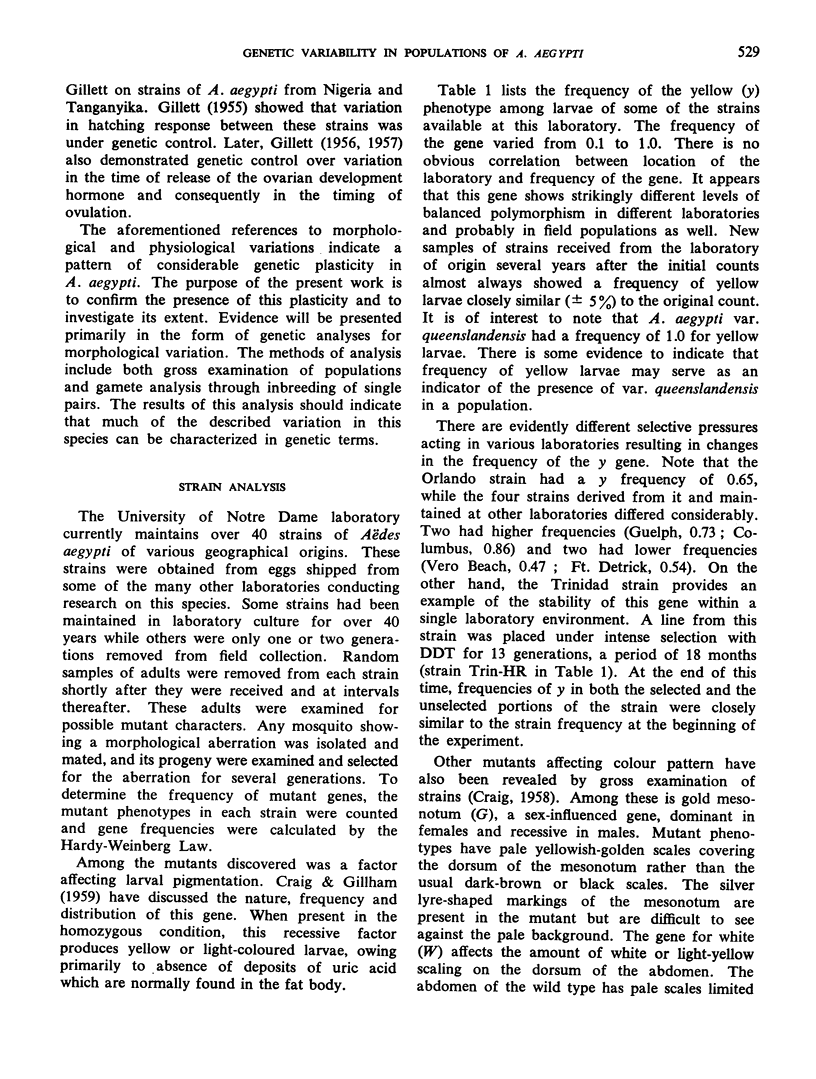
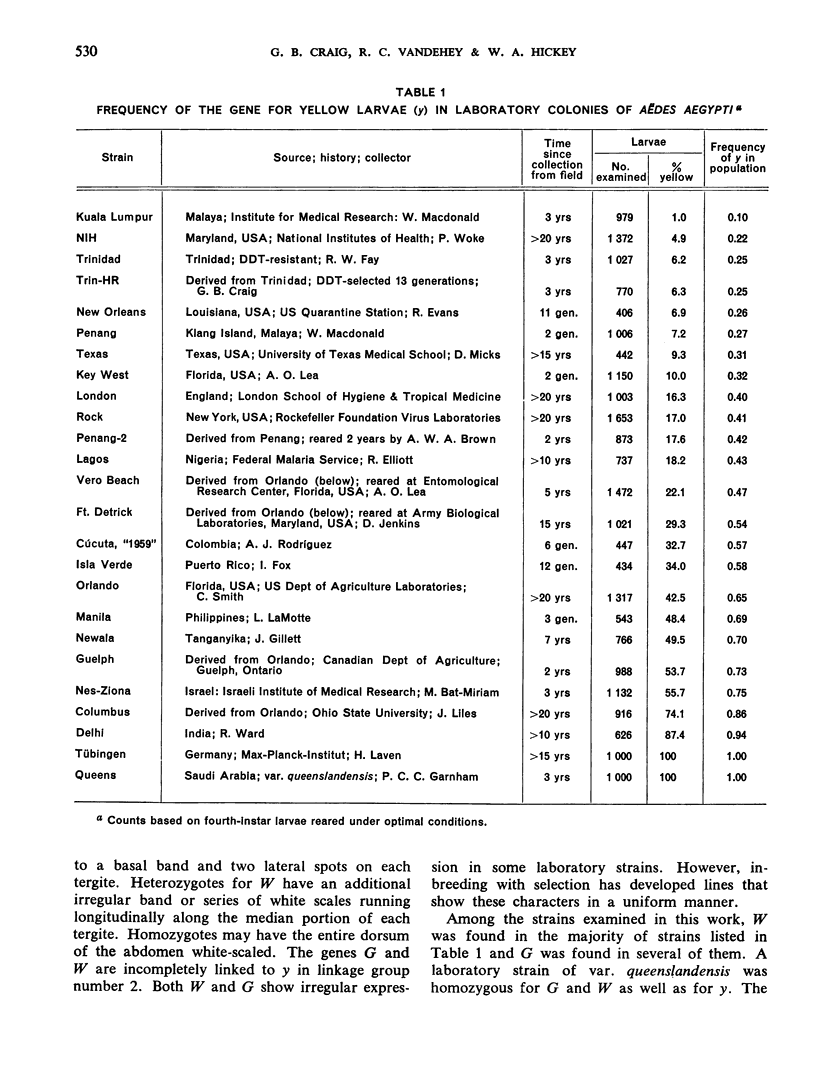

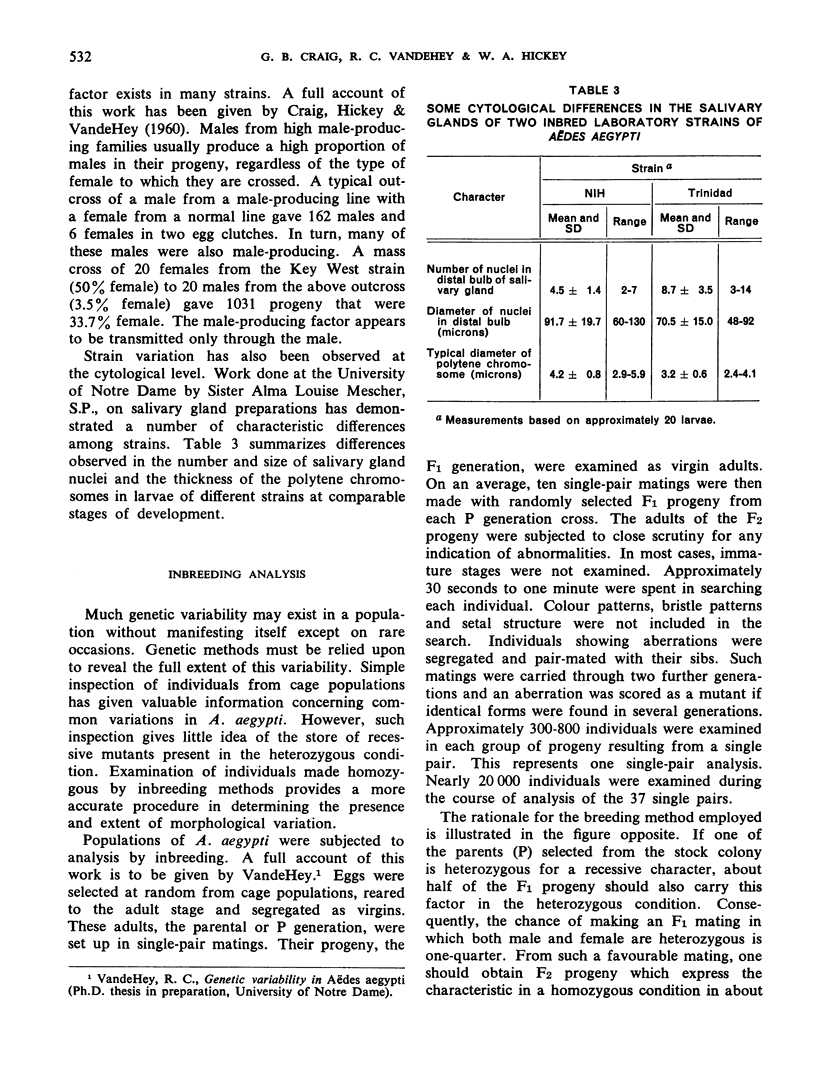
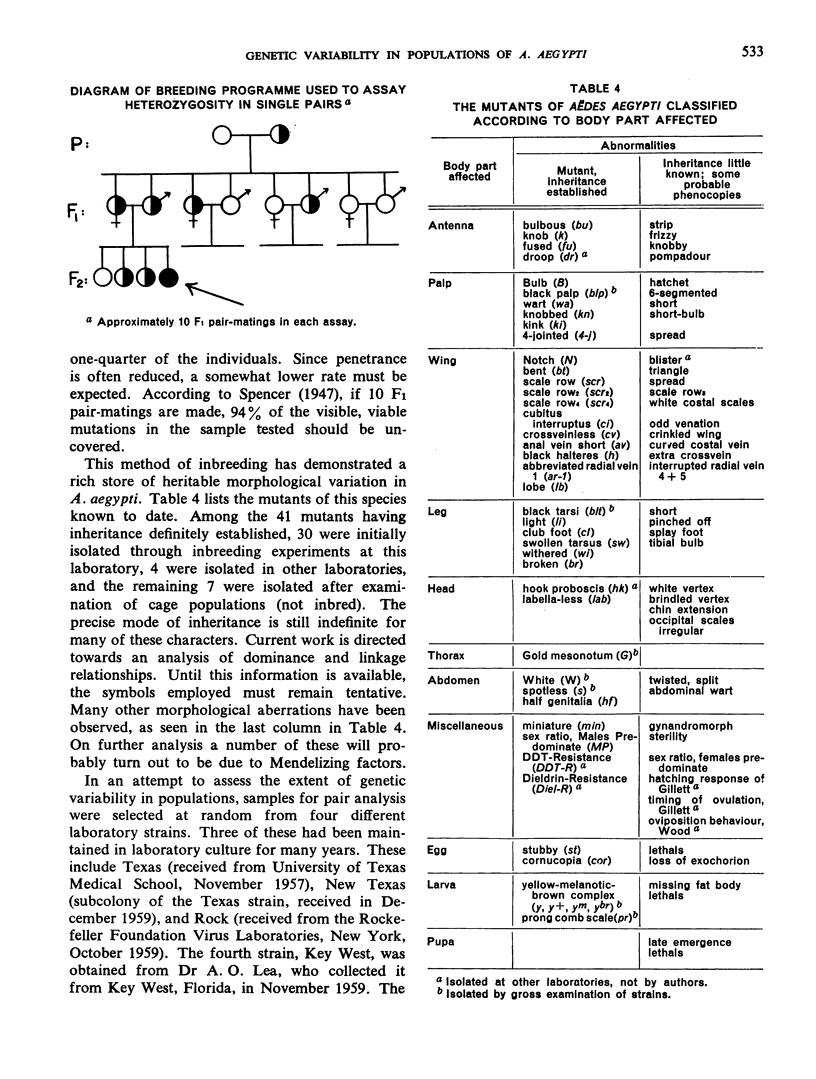
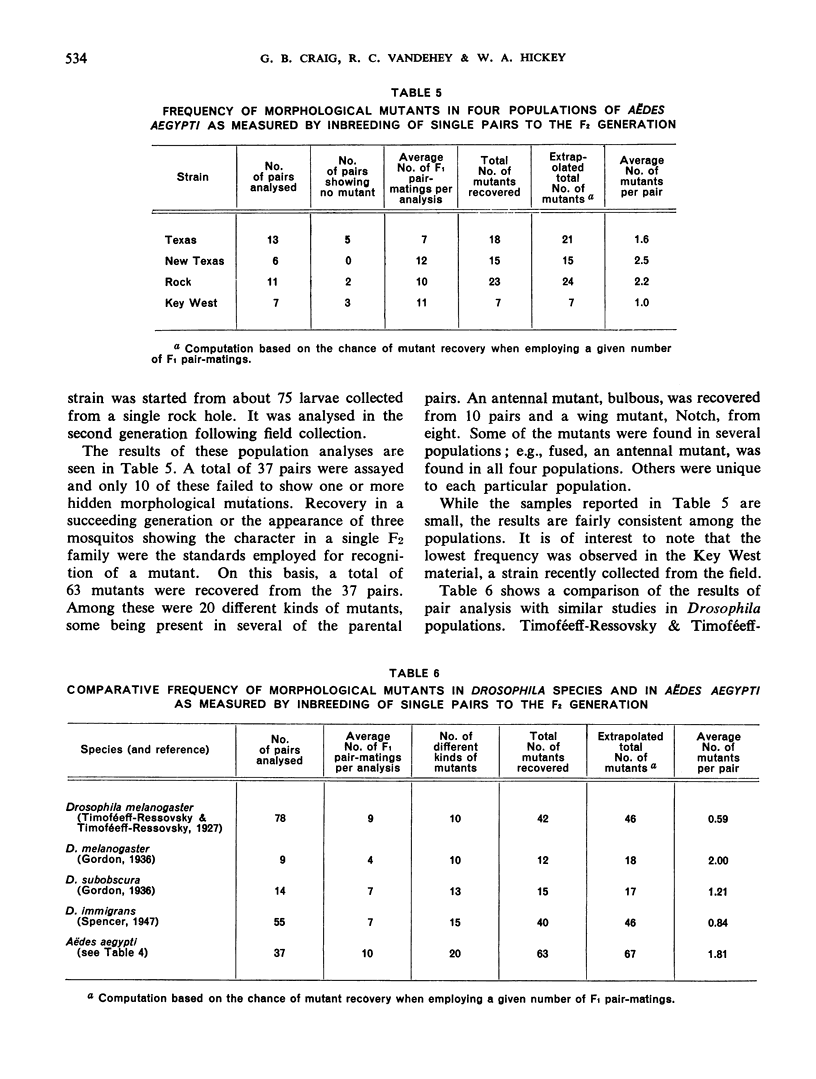


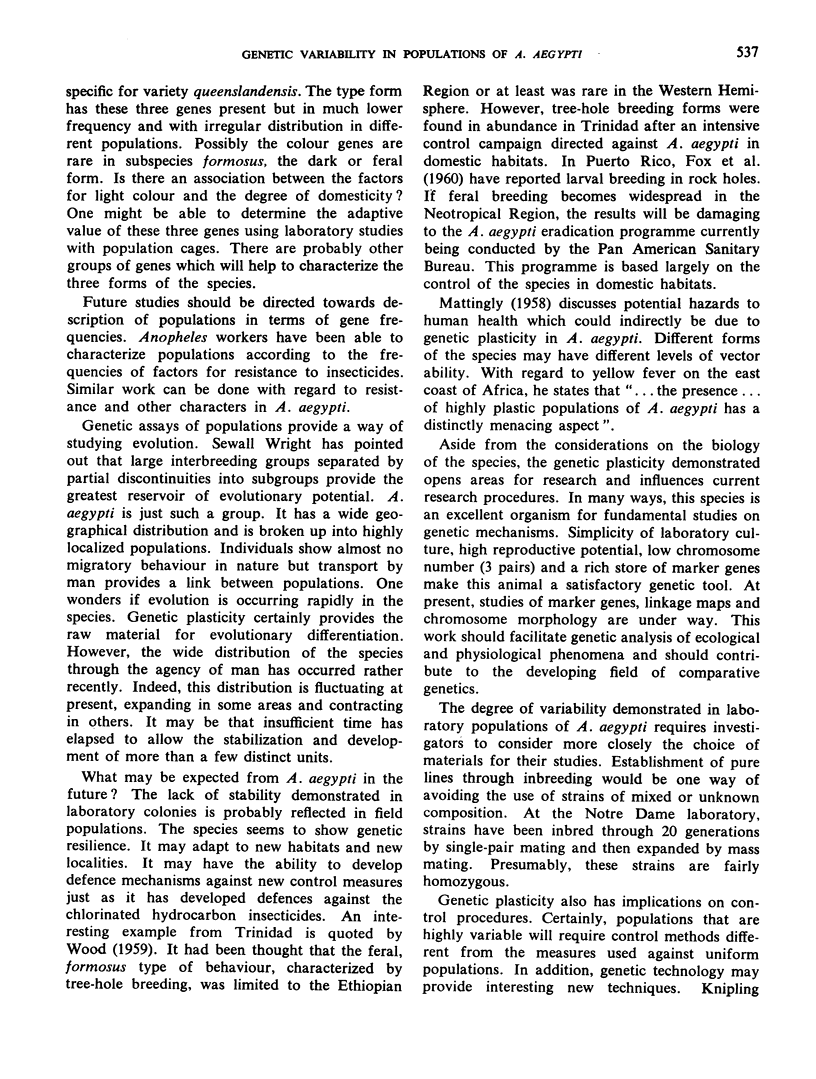
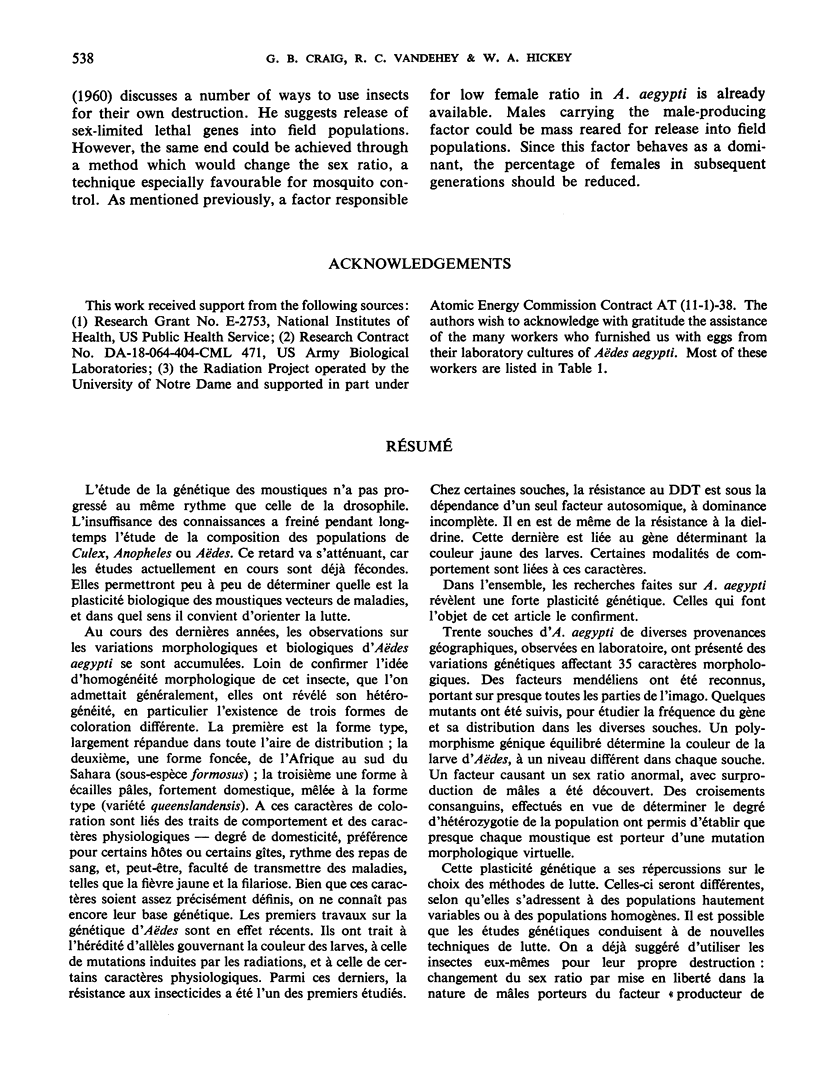
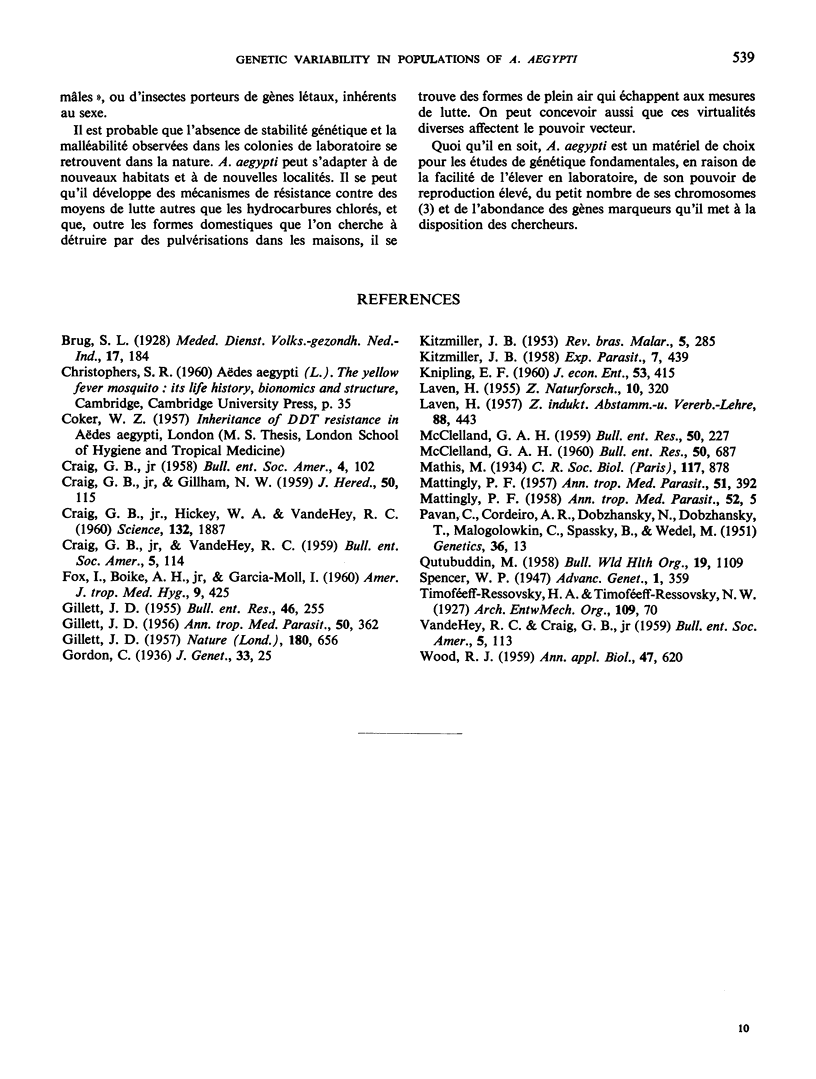
Selected References
These references are in PubMed. This may not be the complete list of references from this article.
- CRAIG G. B., Jr, HICKEY W. A., VANDEHEY R. C. An inherited male-producing factor in Aedes aegypti. Science. 1960 Dec 23;132(3443):1887–1889. doi: 10.1126/science.132.3443.1887. [DOI] [PubMed] [Google Scholar]
- FOX I., BOIKE A. H., Jr, GARCIA-MOLL I. Notes on rock hole breeding and resistance of Aedes aegypti in Puerto Rico. Am J Trop Med Hyg. 1960 Jul;9:425–429. doi: 10.4269/ajtmh.1960.9.425. [DOI] [PubMed] [Google Scholar]
- GILLETT J. D. Genetic differences affecting egg-laying in the mosquito Aëdes (Stegomyia) aegypti (Linnaeus). Ann Trop Med Parasitol. 1956 Dec;50(4):362–374. doi: 10.1080/00034983.1956.11685778. [DOI] [PubMed] [Google Scholar]
- GILLETT J. D. Variation in the time of release of the ovarian development hormone in Aedes aegypti. Nature. 1957 Sep 28;180(4587):656–657. doi: 10.1038/180656a0. [DOI] [PubMed] [Google Scholar]
- KITZMILLER J. B. Mosquito genetics and cytogenetics. Rev Bras Malariol Doencas Trop. 1953 Oct;5(4):285–359. [PubMed] [Google Scholar]
- KITZMILLER J. B. X-ray induced mutation in the mosquito, Culex fatigans. Exp Parasitol. 1958 Jul;7(4):439–462. doi: 10.1016/0014-4894(58)90039-0. [DOI] [PubMed] [Google Scholar]
- MATTINGLY P. F. Genetical aspects of the Aedes aegypti problem. I. Taxonom: and bionomics. Ann Trop Med Parasitol. 1957 Dec;51(4):392–408. [PubMed] [Google Scholar]
- MATTINGLY P. F. Genetical aspects of the Aedes aegypti problem. II. Disease relationships, genetics and control. Ann Trop Med Parasitol. 1958 Mar;52(1):5–17. [PubMed] [Google Scholar]
- PAVAN C., CORDEIRO A. R., DOBZHANSKY N., DOBZHANSKY TH, MALOGOLOWKIN C., SPASSKY B., WEDDEL M. Concealed genic variability in Brazilian populations of Drosophila Willistoni. Genetics. 1951 Jan;36(1):13–30. doi: 10.1093/genetics/36.1.13. [DOI] [PMC free article] [PubMed] [Google Scholar]


